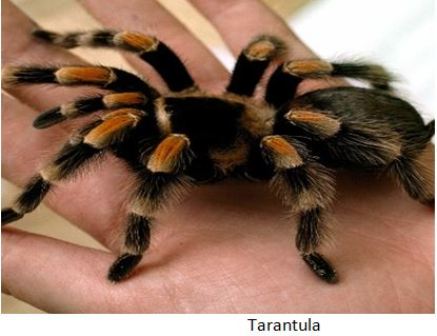Study Unravels Source of Venom in Spiders
The study shows the importance of undertaking research on the venoms of animals like spiders.
Spiders, with their unique ability to secrete silk and venom, are among the most successful animals on earth. The evolutionary origin of poisons in spiders has mainly remained uninvestigated. A study by two researchers of the Evolutionary Venomics Lab, Indian Institute of Science, Bangalore, has provided insights into the origin and early evolution of venom in spiders.
earth. The evolutionary origin of poisons in spiders has mainly remained uninvestigated. A study by two researchers of the Evolutionary Venomics Lab, Indian Institute of Science, Bangalore, has provided insights into the origin and early evolution of venom in spiders.
Naeem Yusuf Shaikh and Dr Kartik Sunagar of IISc have recently published a paper on the origin of disulfide-rich spider venom toxins that have played a significant role in the evolutionary success of several animals. While many studies have investigated the source of venom in animals like snakes, the origin of spider venom remains uninvestigated.
“In contrast to snake and scorpion venoms that are widely studied, spider venoms have been relatively less investigated. Research on these lesser-investigated model systems can help us identify candidates of therapeutic interest to humans,” said the researchers while talking to India Science Wire.
This study has led to several interesting findings. Although spider venoms are rich in Disulfide-Rich Peptides (DRPs) with many distinct structures and activities, their origin remains elusive. The researchers traced the source of these DRP toxins to the common ancestor of all extant spiders, 375 MYA. The hypothetical ancestral toxin has been named ‘Adi Shakti’ after the creator of the Universe, as per the beliefs of Hindu mythology. The researchers have also described 78 novel toxin superfamilies from spiders and named them.
“Venom is a complex cocktail of toxins with different structures and functions. Unlike most venomous animals (e.g., snakes) that have recruited many different toxins into their venoms, spiders have diversified a single component into several distinct structural and functional forms. Our study highlights the contrasting evolutionary diversification rates of venoms in Mygalomorphae (e.g., tarantulas and funnel-web spiders) andAraneomorphae (e.g., orb-web spiders and black widows) spiders,” researchers explain.
They have also identified the differences in venom deployment, such as for prey capture or anti-predatory self-defence, that dictate the evolution of spider venoms. They assessed all spider venom toxin sequences found to date. They carried out extensive phylogenetic and evolutionary analyses to understand their origin and identify the underlying forces influencing the evolution of spider venom.
The study shows the importance of undertaking research on the venoms of animals like spiders which need to be studied more, and highlights the fascinating origins of this highly adaptive trait in nature. The study findings have been published in eLife, a not-for-profit, peer-reviewed, open-access journal. The Wellcome Trust DBT India Alliance has supported the study.
